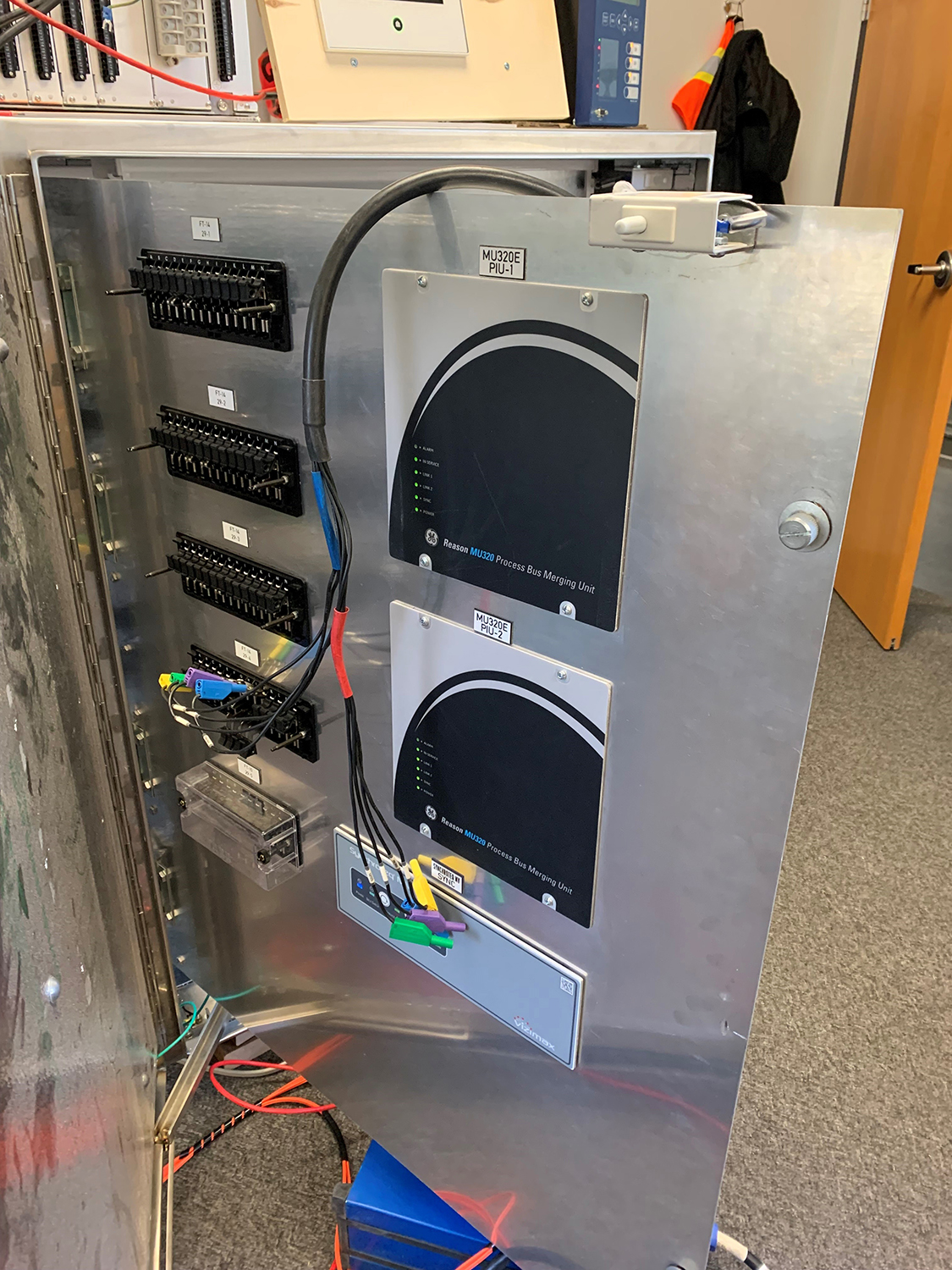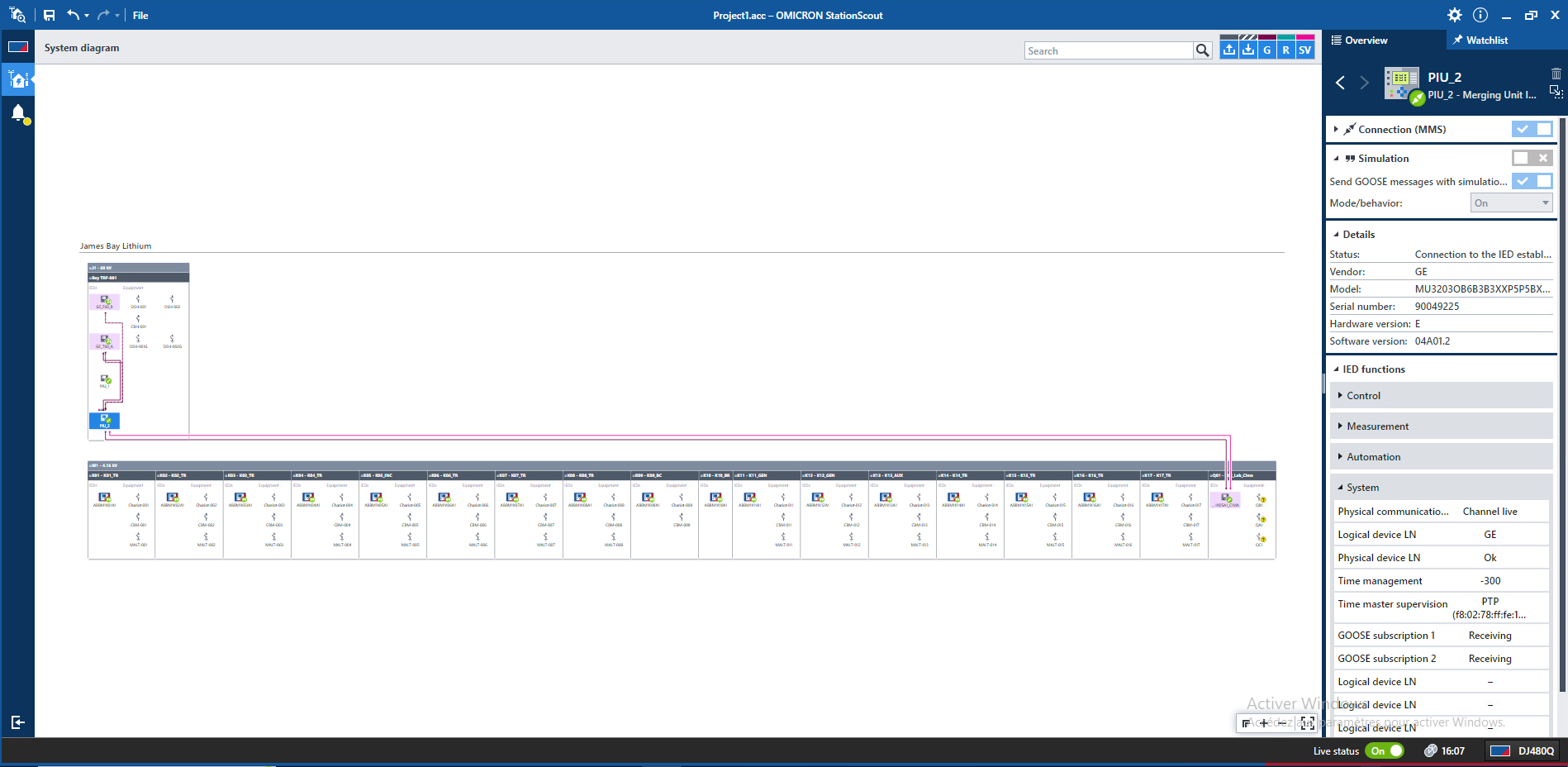Digital substation projects are complex and unique, requiring careful planning and rigorous testing before commissioning. Using the IEC 61850 standard offers many advantages , including improved quality, accessibility, risk management and the use of powerful simulation tools. In this second blog on the IEC 61850 solution, we will look at these advantages, focusing on laboratory testing.

Quality improvement
Training of qualified office staff: When tests are carried out in the laboratory, staff can benefit from appropriate, specialized training. This ensures a better understanding of test procedures, safety standards and specific substation functionalities. As a result, overall test quality improves, reducing the risk of errors and future problems , as well as start-up delays on the worksite.
Adequate and permanent problem solving: By carrying out tests in the laboratory, problems can be identified and resolved more quickly and efficiently. Unlike conditions on construction sites, laboratory environments are controlled, making it easier to isolate problems and quickly implement appropriate solutions. Resolving problems upstream prevents them from spreading on site, saving time, and reducing the costs associated with subsequent corrections, as well as the start-up time on site.
Completion of project documentation: Laboratory testing offers the advantage of providing more time to complete the project documentation, and particularly the operating manual. Complete and accurate documentation helps operating personnel understand how the substation works, and how to maintain it once in service. This ensures a smooth transition between the test and operating phases.
Accessibility improvement
Work-life balance: By reducing the time spent on site for testing, staff can enjoy a better work-life balance. Laboratory testing enables activities to be planned more efficiently, reducing frequent trips to the worksite and unnecessary interruptions. This helps improve staff satisfaction and productivity.
Easy Internet access: Laboratories are generally equipped with a solid IT infrastructure, offering efficient access to the Internet, enabling staff to conduct research, communicate with other experts and solve problems more quickly. Easy access to the Internet also encourages the use of remote diagnostic and monitoring tools, facilitating preventive maintenance and early detection of anomalies.
Training of the client’s office staff: Laboratory testing also facilitates the training of the client’s staff. Training sessions can be organized in a controlled environment, using equipment available on site. This reduces the logistical constraints associated with field training and gives clients a better understanding of how the substation works and how it integrates into their existing system.
Risk management improvement
Tests carried out earlier in the project schedule: By carrying out laboratory tests as early as possible in the project schedule, sufficient time is left to deal with unforeseen circumstances before commissioning. Problems detected during testing can be corrected more quickly and proactively, reducing the risk of costly delays and service interruptions.
Reduction of field-testing: By performing a significant part of the testing in the laboratory, the time and space required on site are reduced. This allows other subcontractors to work more efficiently, undisturbed by testing activities. Furthermore, reducing field-testing helps to improve safety by minimizing the risks associated with work in progress.
Health and safety management and lockout: Conducting tests in the laboratory significantly reduces the need for health, safety and lockout management in the field. Risks associated with working at height, in confined spaces and with electrical sources are minimized, as most testing is carried out in a controlled environment. This supports a proactive approach to safety, reducing the risk of accident and injury.
Use of powerful simulation tools
Complete system test: Laboratory testing uses high-performance simulation tools to effectively test the entire substation system. These tools can recreate realistic and complex conditions, simulate normal and impaired operating scenarios, and model interactions with other equipment and systems. Thanks to these advanced simulations, it is possible to verify overall system performance, identify any limitations and make adjustments to ensure optimal operation.
Saving time and resources: Using simulation tools reduces reliance on field-testing, which can be costly and time-consuming. Simulations enable virtual testing to be conducted more quickly, without disrupting field activities. This saves time and resources, while delivering reliable and accurate results.
System optimization: Advanced simulation tools help optimize the substation system by evaluating different configurations and parameters. These simulations help determine the best possible configuration, identify potential bottlenecks, optimize performance and minimize the risk of malfunction. As a result, laboratory testing with high-performance simulation tools helps to improve system design and efficiency.

In conclusion, laboratory testing of a digital substation project using the IEC 61850 solution offers significant advantages in terms of improved quality, accessibility, risk management and the use of high-performance simulation tools. Specialized training, early problem resolution, Internet availability, easy training of client personnel, proactive risk management, reduced field-testing and the use of advanced simulation tools all contribute to the overall success of the project. By adopting this approach, organizations can achieve improved operational performance, cost savings and greater stakeholder satisfaction.
For more information, follow this link or directly contact our IEC 61850 laboratory manager at: Stephane.huot@cima.ca